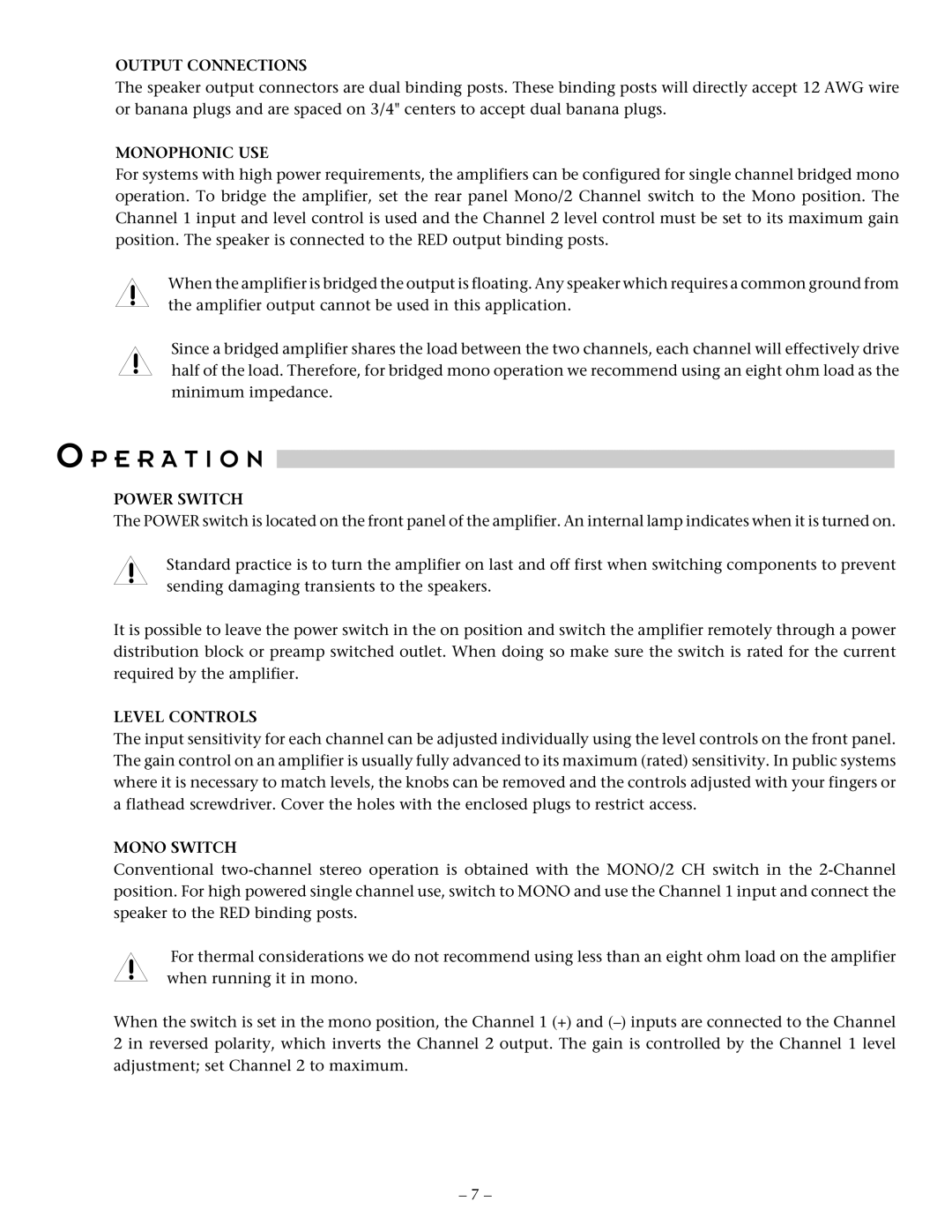P3000, P1500 specifications
The Hafler P1500 and P3000 are notable power amplifiers that have earned recognition for their performance and reliability in various audio applications. Both models are designed to deliver high-quality sound reproduction while offering users an array of advanced features that enhance their usability in professional and home audio setups.The Hafler P1500 is a two-channel power amplifier that boasts a robust output of 150 watts per channel at 8 ohms, making it suitable for driving a variety of speakers with ease. One of its standout features is the intelligent cooling system, which ensures the amplifier operates at optimal temperatures, minimizing the risk of thermal overload. Furthermore, the P1500 is equipped with a high-quality toroidal transformer, which helps to reduce distortion while providing stable power, contributing to the amplifier's overall clarity and dynamic range.
In addition to its power capabilities, the P1500 includes features such as a variable speed fan and comprehensive protection circuitry to safeguard the amplifier from overcurrent and overheating. The user-friendly design includes both XLR and RCA inputs, allowing for versatile connectivity options with professional audio equipment and consumer audio devices alike. The rugged construction of the chassis is designed to withstand the rigors of touring and studio environments, ensuring durability and reliability.
On the other hand, the Hafler P3000 elevates the performance level with a powerful output of 300 watts per channel at 8 ohms. This amplifier is particularly favored in larger audio setups where significant power is required. It utilizes similar advanced technology as the P1500, including sophisticated thermal management systems and high-performance circuitry aimed at keeping distortion levels to a minimum.
The P3000 is recognized for its exceptional headroom and dynamic capability, making it an ideal choice for driving large speaker systems in professional settings such as recording studios and live events. The amplifier features balanced XLR connectors for professional applications, and its dual-level LED indicators provide real-time feedback on performance, giving users essential information on levels and operation status.
Both the Hafler P1500 and P3000 are exemplary models that blend innovative design with high-quality sound performance. Their reputation in the audio community stems from their ability to deliver powerful performance, reliability, and flexibility, catering to a multitude of audio environments from home theater systems to professional sound reinforcement setups. Their enduring popularity reflects Hafler’s commitment to engineering excellence, allowing audio enthusiasts to experience superior sound without compromise.

